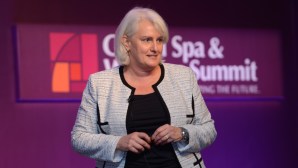What’s next in shared services? – U.K. trends the U.S. should follow
With milestones such as the General Services Administration’s new Unified Shared Services Management and the successful transition of the U.S. Department of Housing and Urban Development’s finance, travel and acquisition services to the Treasury’s Administrative Resource Center (ARC), shared services have been taking off.
But that just poses the question, where can we go from here?
One answer is for the federal government to tap into the spirit of innovation and gain insights from our peers in the U.K.
Recently, Hampshire County Council, a local government in the south of England made customer service and digital innovation a focus in their new shared services program led by Carolyn Williamson, the county’s director of Corporate Services. In this effort, Hampshire County Council, another county council, and police and fire departments all joined this shared service partnership – breaking down boundaries between public sector organizations.
The scale of the organizations involved in this partnership is significant with about 90,000 employees. More than 1.8 million people live in the picturesque southern coastal county of Hampshire, which is England’s third largest county and the historic home of “Pride and Prejudice” author Jane Austen.
It includes two critical ports, which handle a large share of container freight and a Royal Navy base. Given the county’s large footprint, one goal was to incorporate customer service as a way to support an increasingly mobile workforce while enhancing mission delivery.
At a recent event with the Shared Services Leadership Coalition, Williamson shared with us their focus on customer service as well as three things to consider when moving to a shared services model.
1. Know your Audience.
In any large-scale change, it can be convenient to focus on the system and not the resulting end user experience. The Hampshire country council created this integrated business center with the goal to create an exceptional customer experience.
One critical component to this is a new mobile application through which employees can manage personal data and undertake transactions such as leave requests and expense reports. Now that transactions are handled through the application, it is easier for managers to track and forecast impacts on their business operations. For employees, the customer in this case, it is a central hub to track their benefits and comply with policies in a real-time way without being tethered to a desk.
2. Share, Simplify, Innovate.
Not only does the mobile application provided improved customer service, it also enables the county to utilize integrated analytics. Information is presented to allow the county leaders to make more informed and insightful decisions, and there is a toolkit that allows data manipulation without the need for downloading to spreadsheets.
The county is already looking at the next version of the application – one that could automate manual hand-offs between systems, provide performance analytics through dashboards, and allow broader supplier and customer self-service capabilities within the application.
3. We Can Work it Out.
The nearly 90,000 government employees — from first responders to office employees — all had to change the way they interacted with their employer. It was important that they were invested in this new approach that would be shared across the county and at the end of the day, would mean better service for themselves and an improved ability to serve the community.
There will likely be uncertainty and challenges in preparing employees for this transition so it is crucial to stay true to the project goals and end-goal result in order to ensure that benefits are delivered in the end. The key to the success of the program lies with both the players and the leaders.
Just like any other major modernization effort, Hampshire County Council faced challenges and acknowledged that there are certain areas that agencies may overlook which makes these projects even more complex than they need to be. Hampshire County Council learned that in a large-scale migration there will always be periods of uncertainty; therefore, agencies should consider a six-to-nine-month stabilization period to support the transition.
Despite the challenges, this shared service partnership shows different ways governments — in the U.K., U.S. and around the world — can affect change by focusing on the user experience.
Adapting lessons from Hampton County Council, the U.S. government and the GSA’s Unified Shared Services Management can continue to ride the wave of innovation rolling in from the U.K. and help lead a cultural change that will transform the business of the U.S. federal government.




